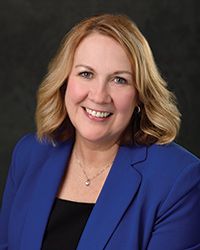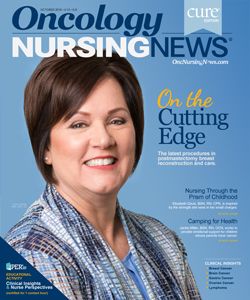Understanding Multigene Testing for Breast Cancer
This article reviews the types of genes included in multigene panels for breast cancer, and the risks associated with those genes.
Mary Alison Smania, DNP, FNP-BC, AGN-BC, FAANP

Mary Alison Smania, DNP, FNP-BC, AGN-BC, FAANP, is a board-certified family nurse practitioner and advanced genetics nurse and assistant professor, Health Programs, at Michigan State University College of Nursing in East Lansing.
The study of genetics and breast cancer has rapidly advanced in the past decade. Genetic testing used to look at only 1 or 2 genes, but now panel, or multigene, testing is available.
With estimates of approximately 252,000 new breast cancer diagnoses every year and 3.5 million breast cancer survivors,1 oncology nurses should assess whether patients are candidates for genetic testing for both their family members and themselves.
As essential members of the healthcare team, oncology nurses can identify patients who may be at risk for a genetic mutation and can significantly improve care for these patients and their families. Up to 10% of those diagnosed with breast cancer may have a genetic mutation.
MULTIGENE PANEL TESTING
The 2 most common genetic mutations associated with breast and ovarian cancer, BRCA1 and BRCA2, were identified almost 20 years ago. Since then, research and improvements in genetic testing have found mutations in other genes that are associated with breast cancer.
Next-generation sequencing has increased the ability to iden­tify several genes in a short period. Although these genetic mutations are much less common and do not seem to increase risk as much as BRCA1 and BRCA2, it is still important to iden­tify the risk and potential impact on patients and families.
Many testing facilities offer multigene panels for breast cancer risk. Below are some of the genes that are included in multigene panels for breast cancer:
- ATM: Helps repair damaged DNA. Inheriting 1 mutated ATM gene increases the risk of breast cancer 2- to 4-fold).2
- BARD1: Acts as a tumor suppressor gene. Mutations can increase breast cancer risk.3
- BRIP1: Works to repair DNA. There is insufficient evidence that BRIP1 increases breast cancer risk, but inheriting 1 mutated BRIP1 gene is associated with a higher risk of ovarian cancer, so it may be included in a multigene panel.3
- CDH1: Makes a protein that helps cells bind together to form tissue. Women with a CDH1 mutation have a 39% to 52% life­time risk of invasive lobular breast cancer.3
- CHEK2: Provides instructions to the body for making a protein that stops tumor growth. CHEK2 mutation can increase the risks for breast, colon, and prostate cancer.4-6
- NBN: Forms in the MRN complex that helps repair DNA damage in cells. Mutations can weaken the immune system.3
- NF1: Acts as a tumor suppressor protein. A mutation can cause an increased risk of breast cancer.3
- PALB2: Provides instructions to make a protein that works with the BRCA2 protein to repair damaged DNA and stop tumor growth. It is a PALB2 mutation and some studies show this mutation increases breast cancer risk 5 to 9 times higher than the average.7
- PTEN: Helps regulate cell growth and causes Cowden syn­drome, a rare disorder in which people have a higher risk of both benign and cancerous breast tumors, as well as growths in the digestive tract, thyroid, uterus, and ovaries. The lifetime breast cancer risk for women with a PTEN mutation can be up to 85%.3
- STK11: Helps regulate cell growth. An STK11 mutation causes Peutz-Jeghers syndrome, a rare disorder in which people tend to develop a hamartomatous polyp, mostly in the small intestine, but also in the stomach and colon. Such a polyp increases the risk of gastrointestinal, breast, lung, and ovarian cancers. Those with this mutation may also develop freckling around the eyes and nose and around and inside the mouth.3
- TP53: Provides instructions to the body for making a protein that stops tumor growth and causes Li-Fraumeni syndrome, a disorder that causes people to develop soft tissue cancers at a young age. People with this rare syndrome have a higher than average risk of breast cancer and several other cancers.3
WHO SHOULD ONCOLOGY NURSES REFER FOR TESTING?
Genetic testing can help patients understand and make import­ant risk-reducing surgical decisions or consider therapies indi­cated for those diagnosed with metastatic breast cancer, such as PARP inhibitor therapy. In addition, genetic testing for the patient can help with determining if other family members should also have testing and take steps to decrease their risk. Consider referring patients with 1 or more of the following:
- personal or family history of breast cancer diagnosed before age 50, ovarian cancer, triple-negative breast cancer, or bilateral breast cancer
- cancers in a family in addition to breast, such as prostate, melanoma, pancreatic, stomach, uterine, thyroid, colon, and sarcoma
- Jewish (Eastern European) heritage
- breast cancer in family
- genetic mutation in a family member
Assessing patients for breast cancer risk begins with gathering their personal and family histories. Determine if the patient is at risk, and if they are, refer them for testing. Along with evalua­tion for risk, it is essential to explain to the patient why genetic testing can guide treatment, potentially saving the lives of the patient and their family members.
REFERENCES
- American Cancer Society. Breast cancer facts and figures 2017-2018. ACS website. cancer.org/content/dam/cancer-org/research/cancer-facts-and-statistics/breast-cancer-facts-and-figures/breast-cancer-facts-and-figures-2017-2018.pdf. Published 2017. Accessed September 7, 2018.
- Bernstein, JL, WECAREStudy Collaborative Group, Concanon, P. ATM, radiation and risk of second primary breast cancer. Int J Radiat Biol. 2017 Oct;93(10):1121-1127. doi: 10.1080/09553002.2017.
- NCCN Clinical Practice Guidelines: Genetic/Familial High-Risk Assessment: Breast and Ovarian Version 2.2019. NCCN website. nccn.org/professionals/physician_gls/pdf/genetics_screening.pdf. Published July 30, 2018. Accessed September 7, 2018.
- Cybulski C, Wokolorczyk D, Jakubowska A, Huzarski T, Byrski T, Gronwal J, et al. (2011). Risk of breast cancer in women with a CHEK2 mutation with and without a family history of breast cancer. J Clin Oncol. 2011 Oct 1;29(28):3747-52. doi: 10.1200/JCO.2010.34.0778
- Wang Y, Dai B, Ye D. CHEK2 mutation and risk of prostate cancer: a systematic review and meta-analysis. Int J Clin Exp Med. 2015 Sep 15;8(9):15708-15.
- Slavin, TP, Neill-Swiller, M, Solomon I, Nehoray B, Rybak C, Blazer KR, Weitzel JN (2015). Clinical application of multigene panels: Challenges of next-generation counseling and cancer risk management. Front Oncol. 2015 Dec 2;5:271. doi: 10.3389/fonc.2015.00271.
- Antonis AC, Casadei S, Heikkinen T, Barrowdale D, Pylkas K, Roberts J et al. Breast-cancer risk in families with mutations i ALB2. NEJM, 2014 371(6) 497-506. doi: 10.1056/NEJMoa1400382.

Nurse Practitioners Weigh in on Data From the San Antonio Breast Cancer Symposium
January 16th 2023Loyda Braithwaite, MSN, RN, AGPCNP-BC, AOCNP; and Jamie Carroll, APRN, CNP, MSN, highlight presentations from the 2022 San Antonio Breast Cancer Symposium that will influence oncology nursing practice.


